There’s a quiet copse of oak and beech trees in the middle of a field. It’s part of a familiar path that I’ve walked for many years. I’ve sheltered in it from sudden storms and sat in it with a blanket and read books until the letters on the page were lost to the dusk. It’s also a place where I have found many animal bones.
My love of bones started at an early age. Intrigued by treasures that could be found in and on the ground, I collected palm sized flints, fistfuls of cobnuts and dried flowers filled with seeds. I scoured the ground until shoe boxes were brimming with found objects, in varying degrees of desiccation. But my favourites were the bones. Often little bird skulls, having been swiped at mid-flight by the neighbour’s cat and left to languish beneath a bush. Bones didn’t have any association for me then, they were just miniature wonders the size of a one pence piece that I could hold—ever so gently—in my hands.
As an adult, I hid my interest in animal bones for decades, because how do you articulate it out loud without sounding like “someone who has sinister documentaries made about them” (a comment made by a previous colleague.) Pre-internet, it was hard to meet like-minded people, and eventually I realised that someone with fringe interests makes others feel uncomfortable.
It’s a positive sign of the times that collectively there has been a shift back to nature in the last few years, with it being seen as an integral part of life rather than a special interest. Because of this I have felt more comfortable sharing the natural treasures that I’ve been obsessed with and collected since I was a child. What may have been seen as an oddity then, is much less so now.
Animal bones possess a stark beauty. Their plain matte colour emphasises intricate hollows and lace-like cavities. They are so much more than what popular culture would label as simply macabre curiosities. Even for the squeamish, it would be hard not to marvel at such incredible feats of nature’s structural engineering, once you look past what they are.
I’ll never forget the intense enthrallment of drawing a ram’s skull during a school art class—and just as memorable: the teacher who made me feel less strange about the things I found fascinating. He taught us all to see beyond what was in front of us and to not be afraid to look past the edges to find a less obvious kind of beauty.
Aside from their stripped back physical beauty, bones are rich with symbolism. In her book Women Who Run With the Wolves, Clarissa Pinkola Estes describes their archetypal symbology:
Bones represent that which can never be destroyed. Stories of bones are essentially about something in the psyche that is difficult to destroy.
Perhaps this is wisdom or even the soul itself, if such a thing exists (I hope it does).
To me bones symbolise the process of getting rid of what’s no longer needed. Metaphorically stripping down to the bones and reaching the essence. That means going beneath the layers of the conscious self. As well as offloading external influences like systems, opinions and projections that seek to confuse, deflect and sidetrack. Getting to the bones feels like strength and clarity. It feels like a place to find the truth.
I wonder if perhaps bones also occupy a symbolic space, existing somewhere between earthly life and the afterlife, a threshold of myth and meaning. Bones are of death but also of life: ash and dust blown into the wind or fertilising the soil from which nature cycles it into life once more. Never destroyed but instead transformed, the essence always remaining.
Autumn is here and the signs of nature’s seasonal decline are all around. Although we know that it will burst back into greenery and flowers, for a few months when the earth seems to recede we’re confronted with the visual depiction of life ebbing away. The copse in the field has opened up now it no longer has its leafy canopy. Despite the muted daylight I can see the mulch and sodden soil more easily. A gleaming fragment of white bone becomes easier to spot, remnants of a life in the wild and an initiation into finding strength and wisdom within.
I’d love to know, do you have any interests that you feel wary about revealing to others?
If you enjoyed this journal entry, you may also like these
Seeds Weeds and Wildflowers is a wholehearted endeavour. If you enjoy reading it and you’re in a position to support it, there’s an option to show your appreciation, to keep this labour of love going. To do so you can click on the button below, with my deep gratitude.
Thank you for reading.
Until next time,
Jo.





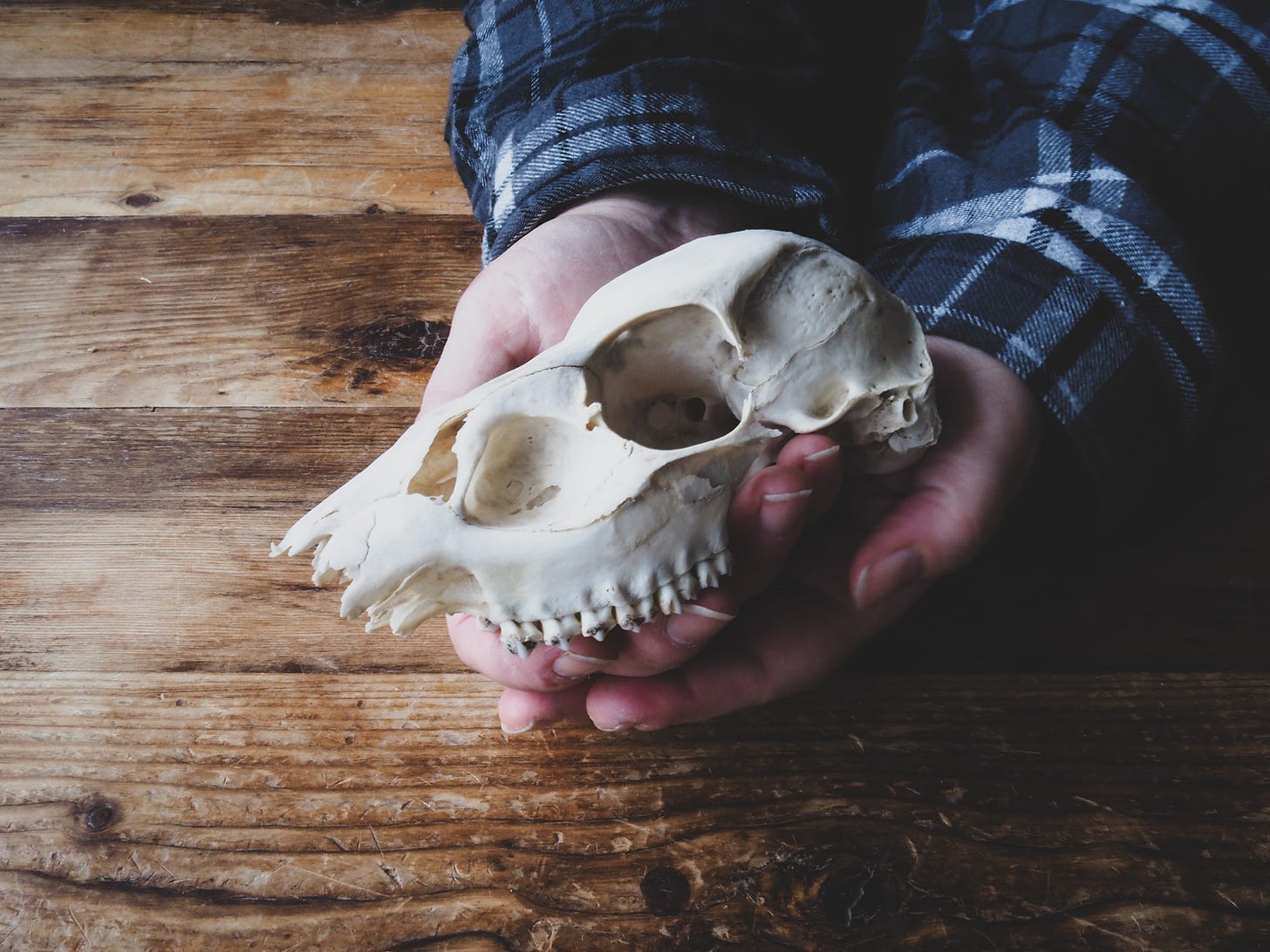
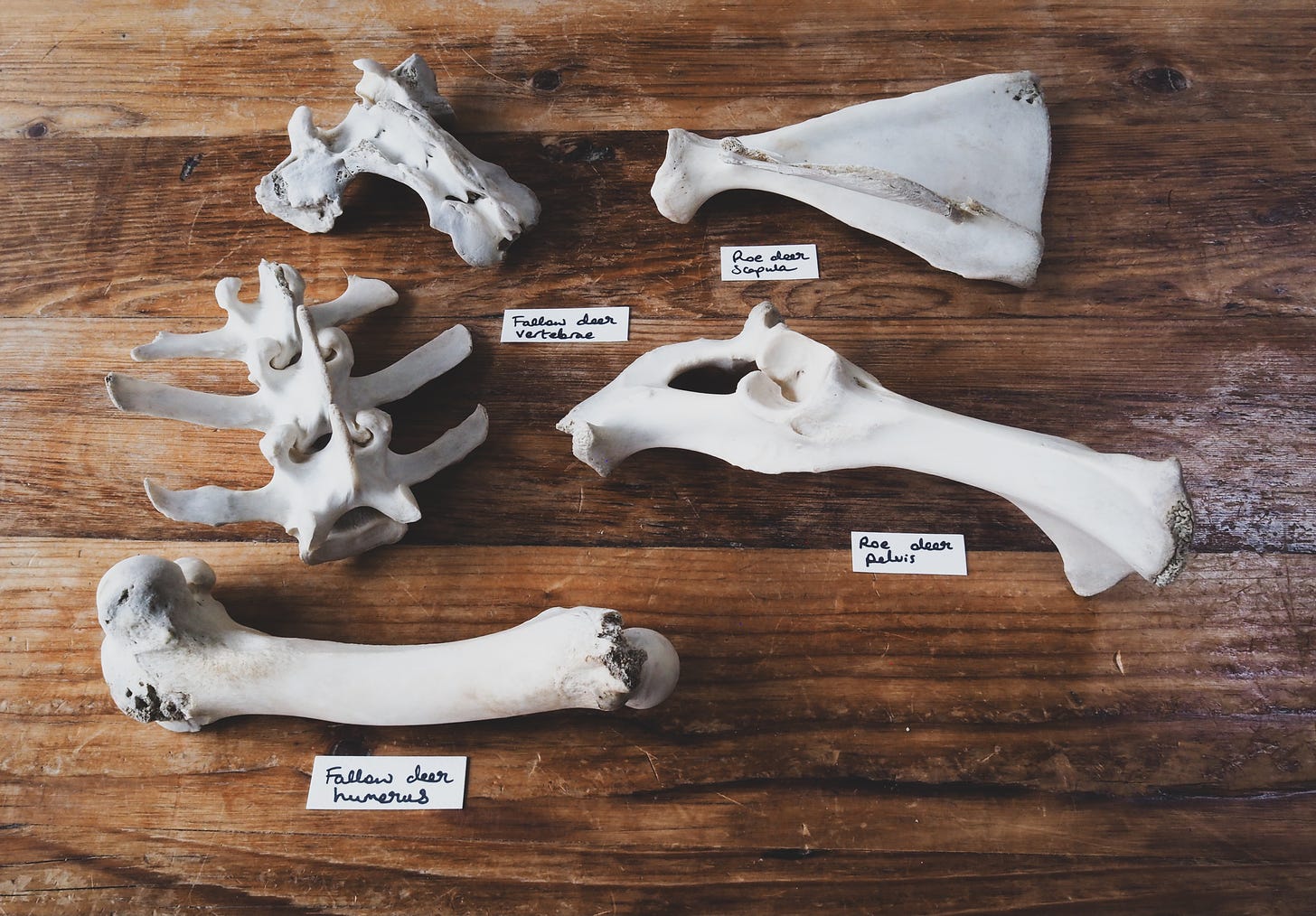
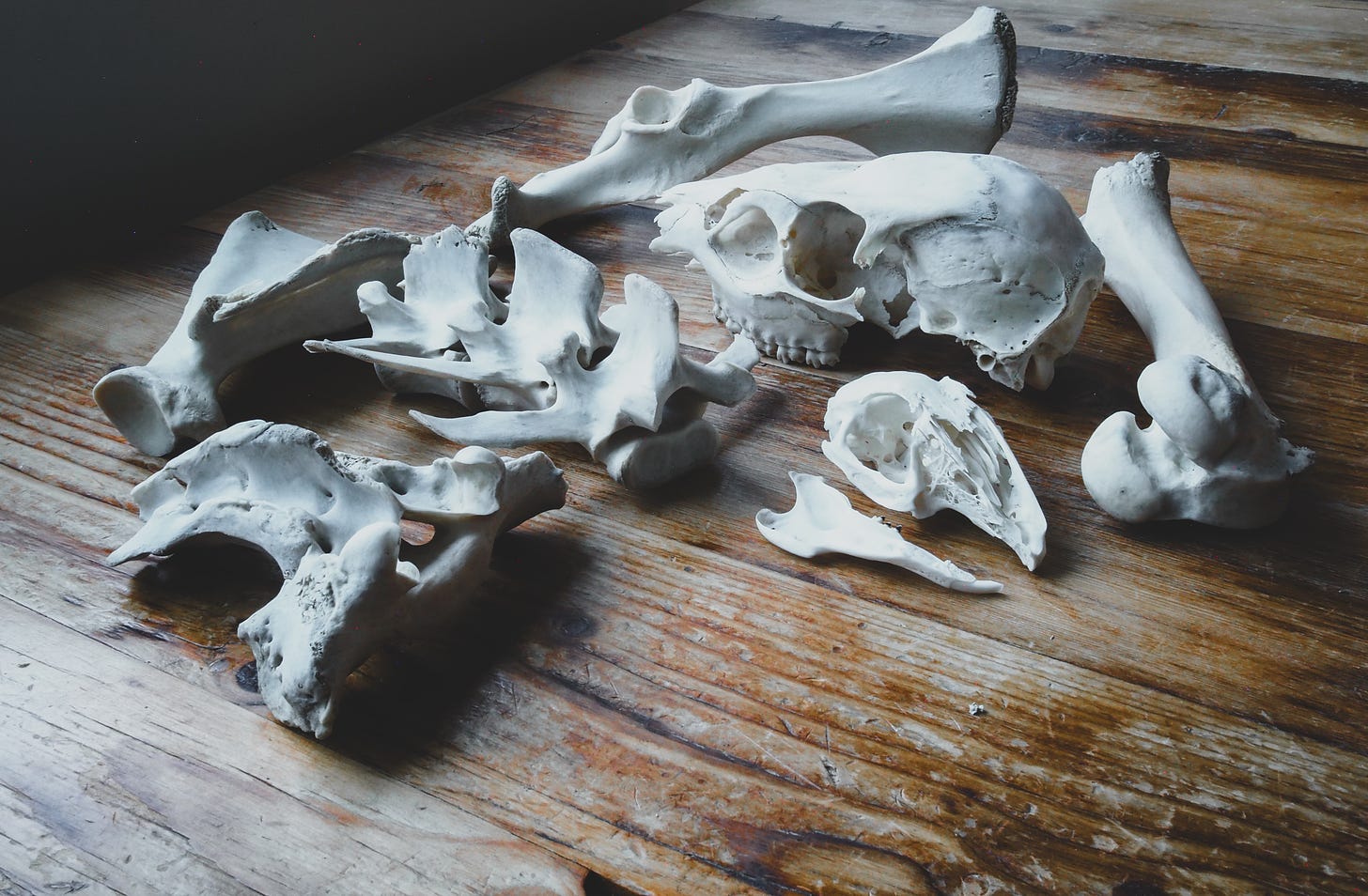
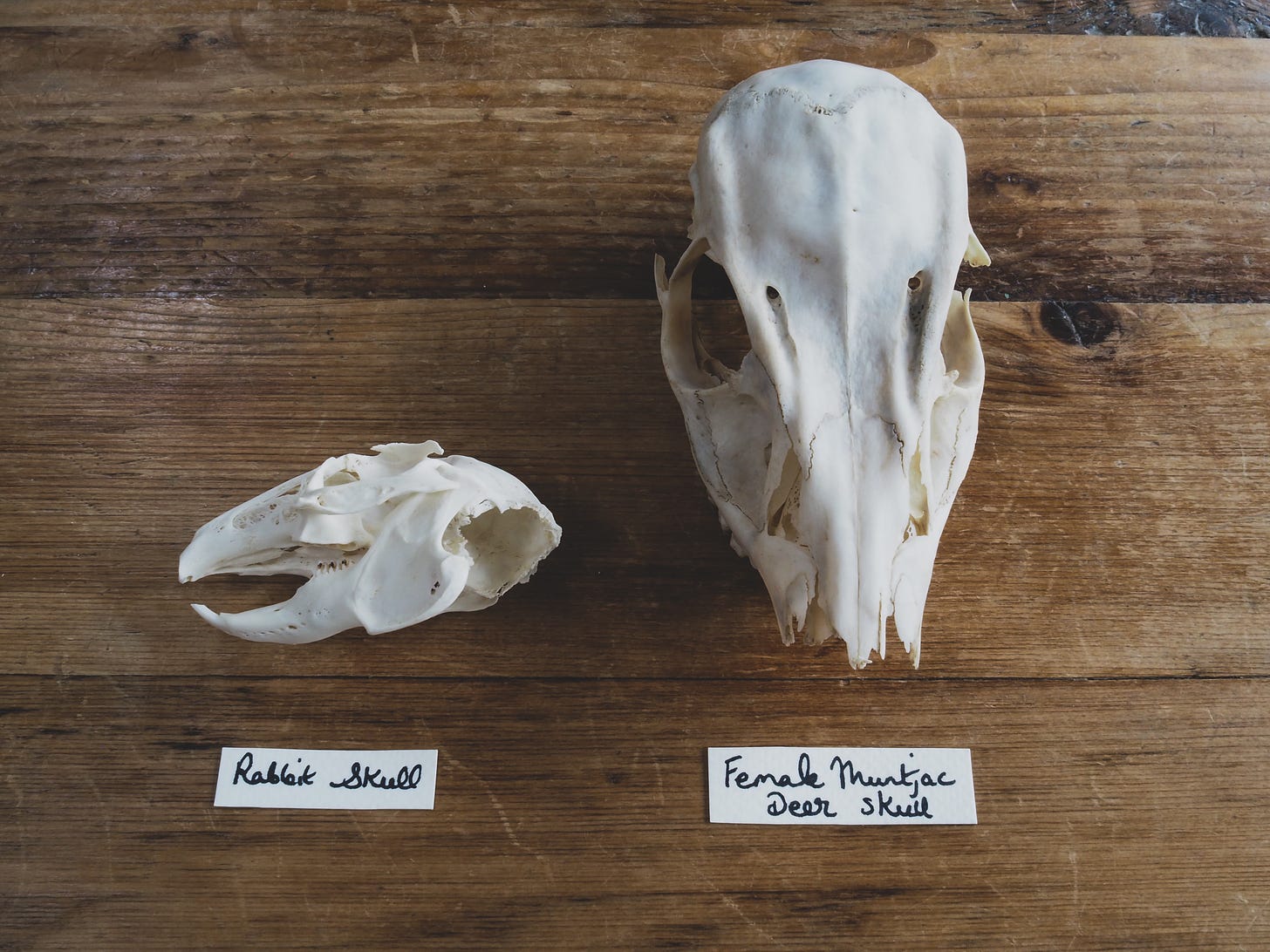
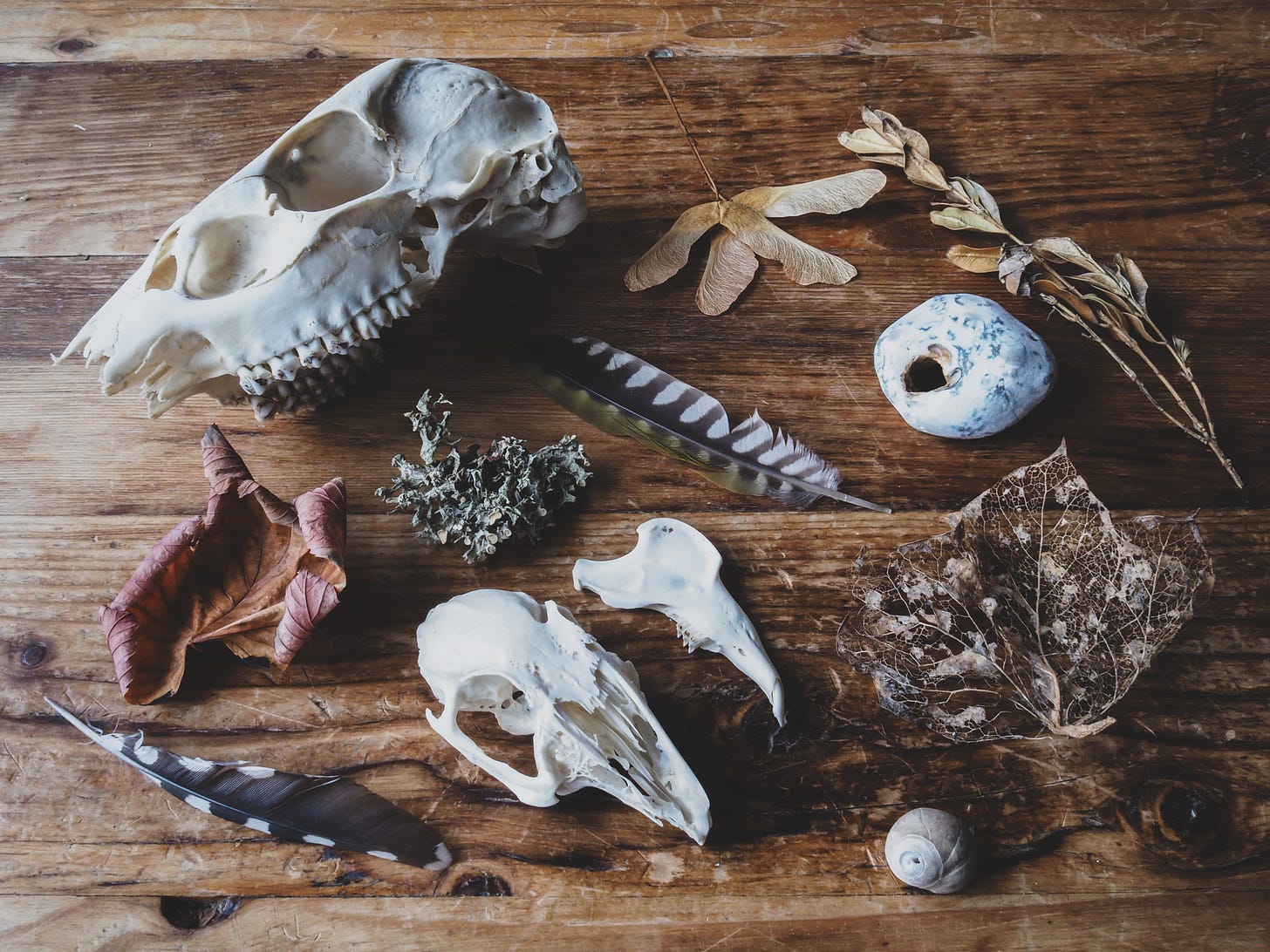


This is such beautiful writing. Sometimes I am really reluctant to share with people my love of tarot. I fear I will be judged although I have no evidence for that.
I am trying to share it more though and be more open here.
During my studies as archaeologist, my favourite campaign was an early Medieval church with hundreds of burials where we spent the days digging human bones. I've learnt so much about the body structure! When I used to tell about this campaign to people, they always grimaced and I even got asked if all these bones smelled badly. Which is funny because they were there since centuries and I remember vividly the smell of earth and how relaxing it was lying on the floor with brushes, my nose just a few centimeters from the bones and this soothing scent of nature. It could have been compared to gardening to me!